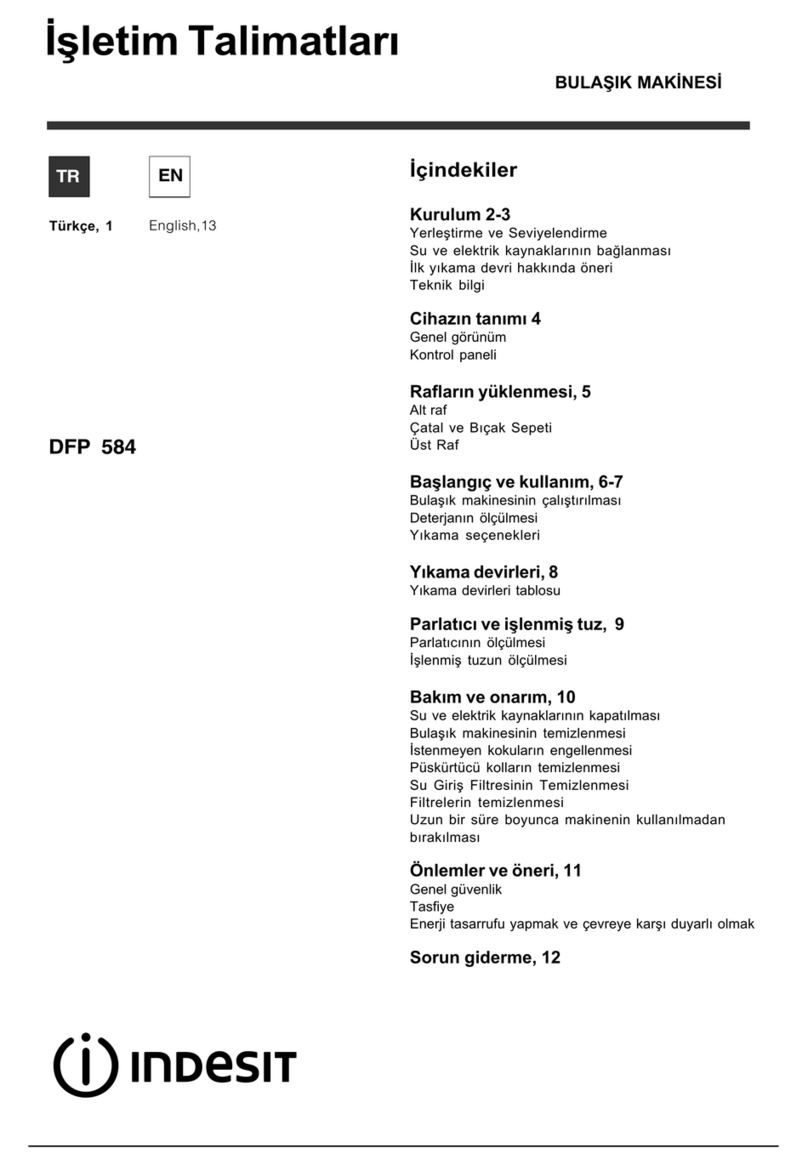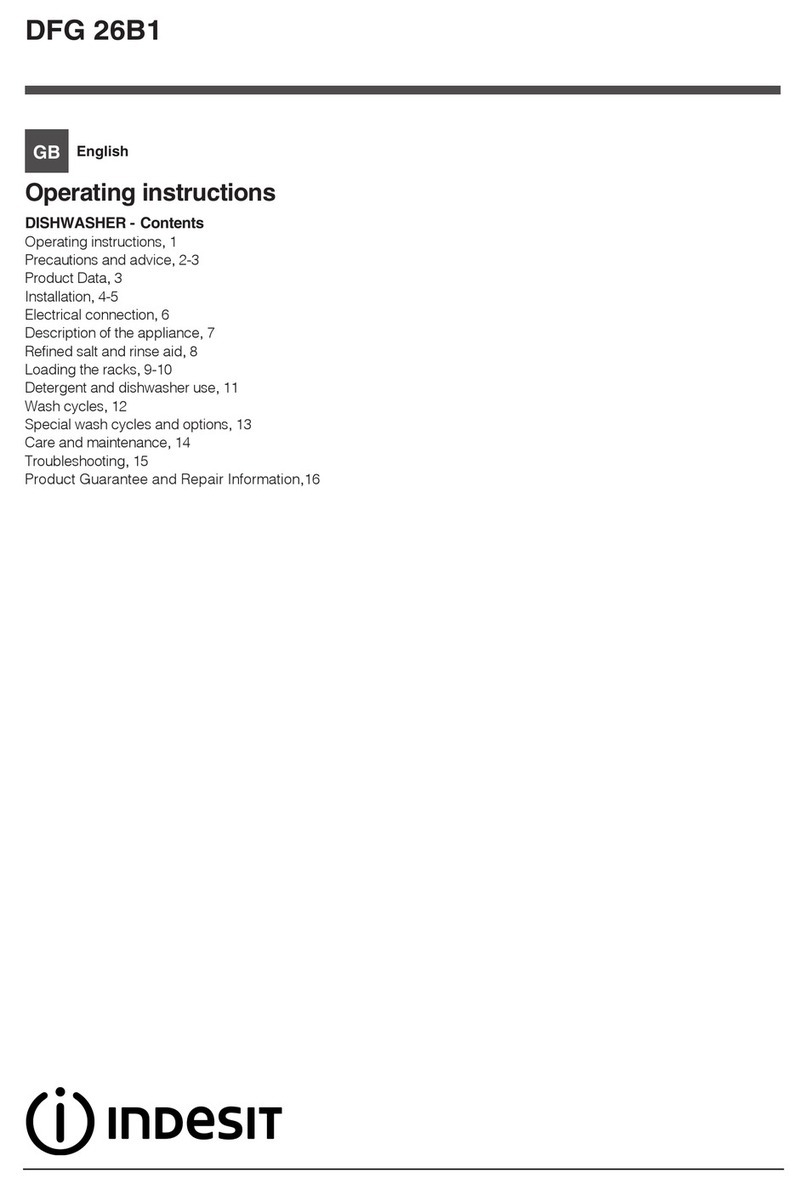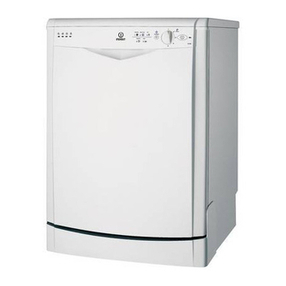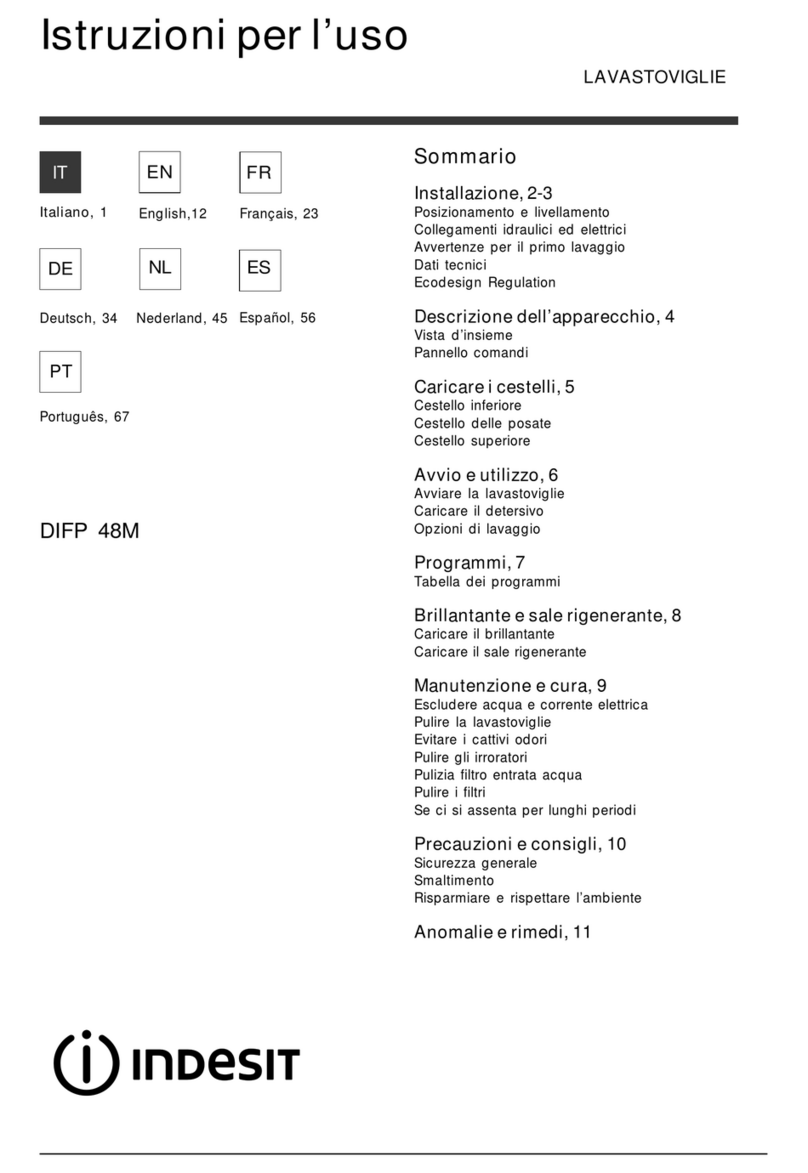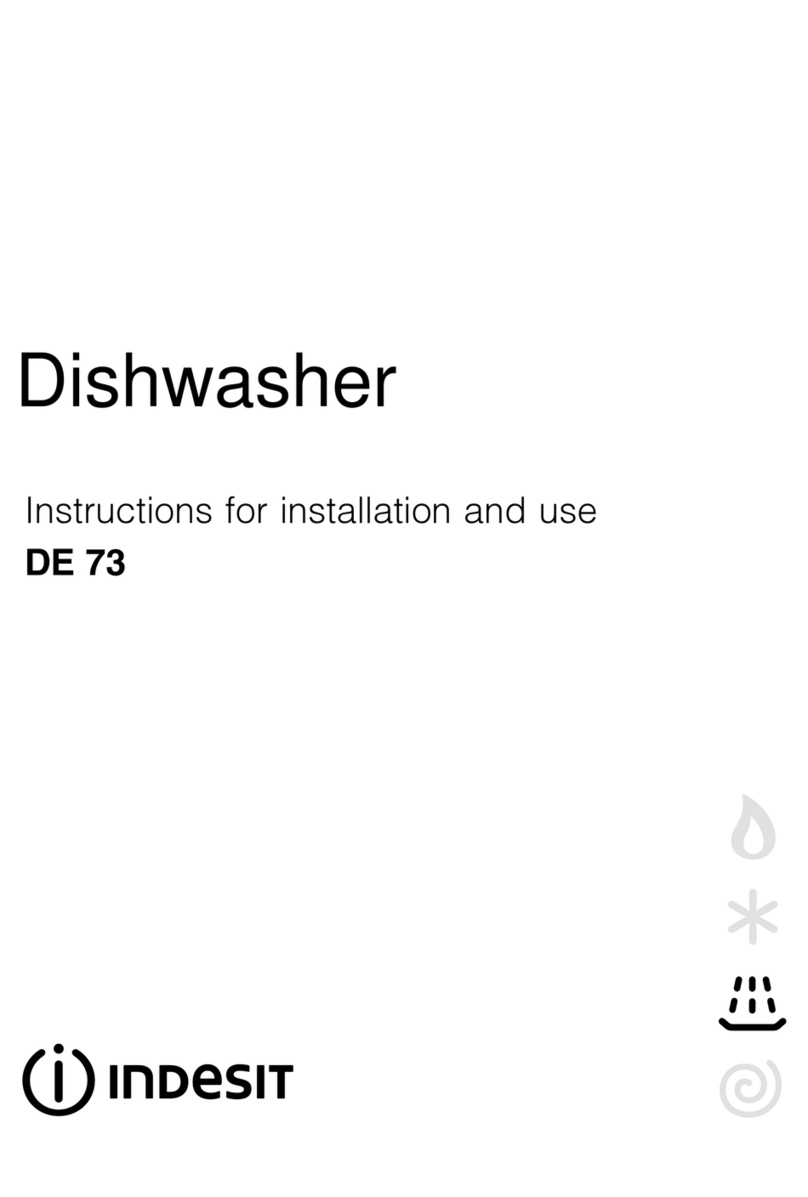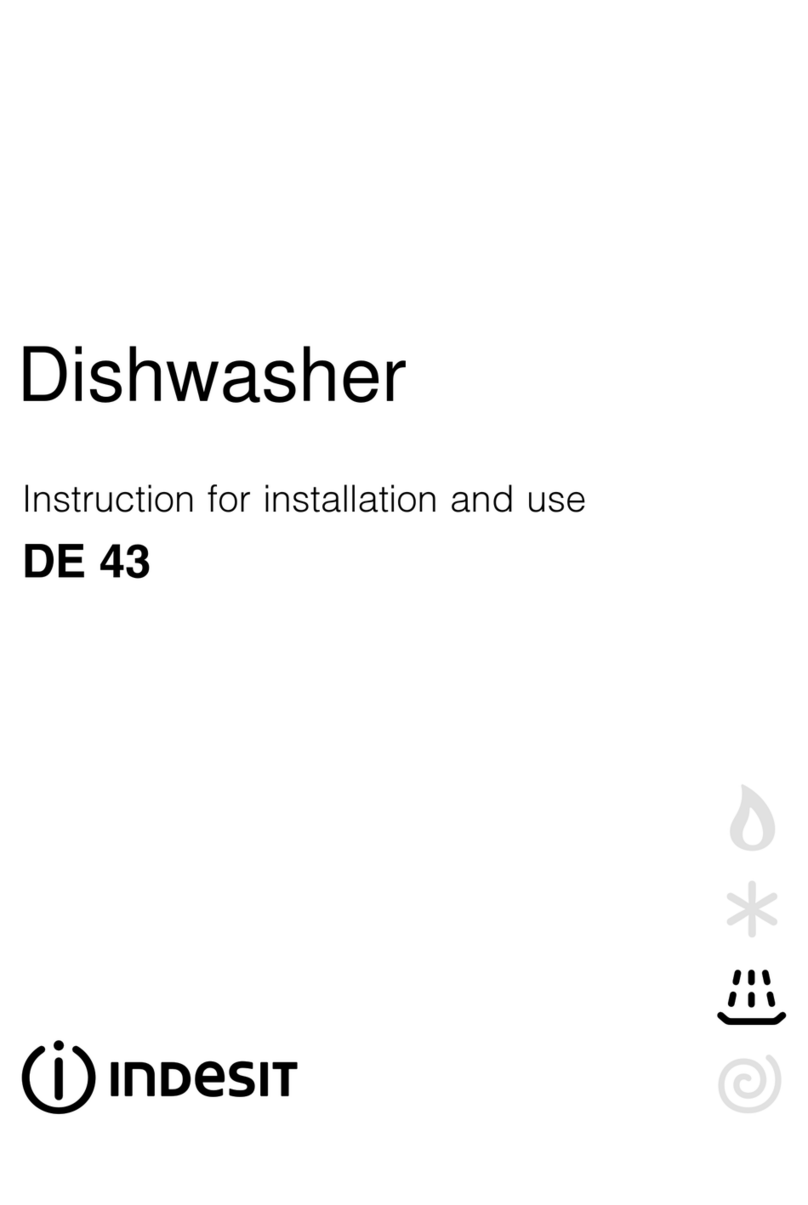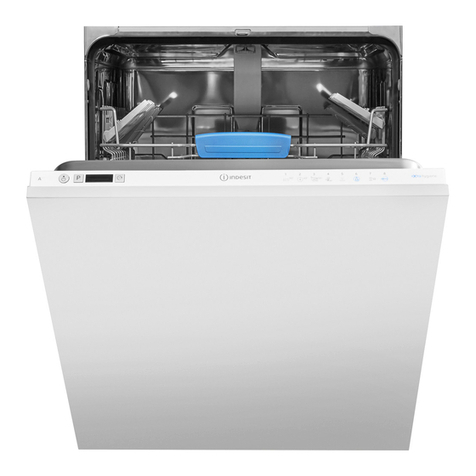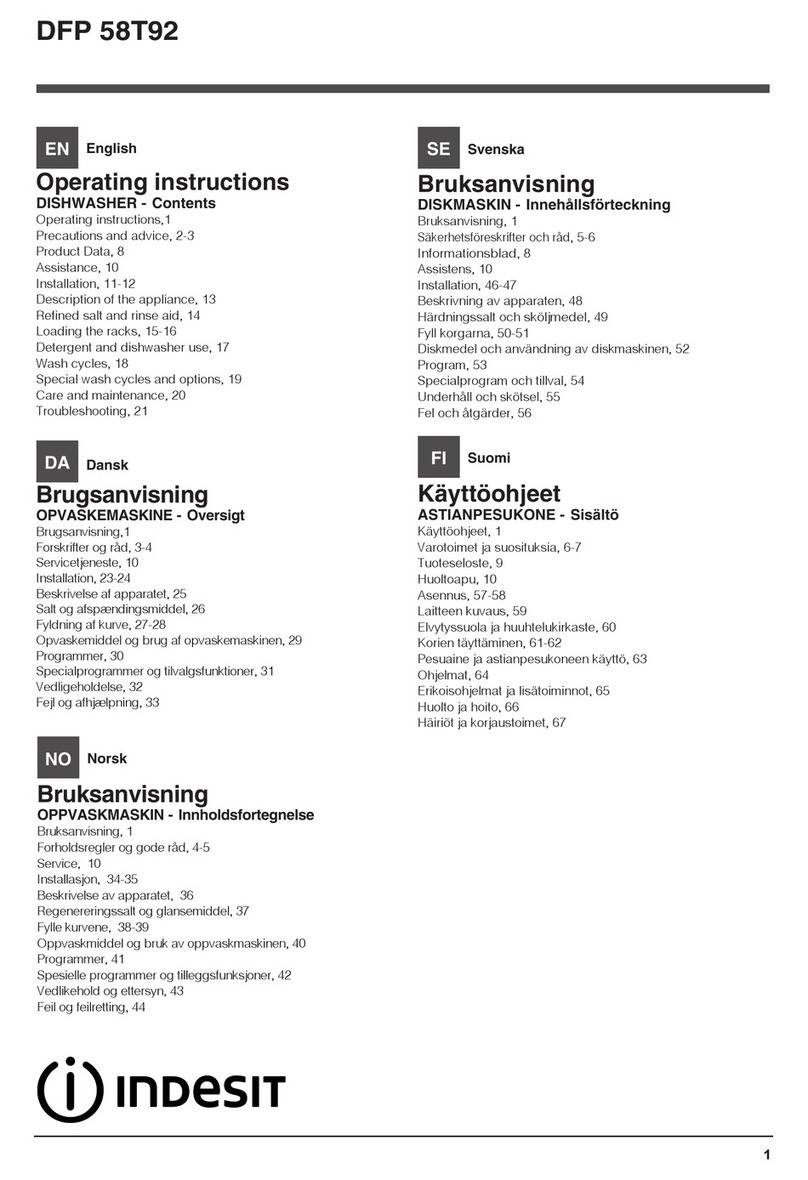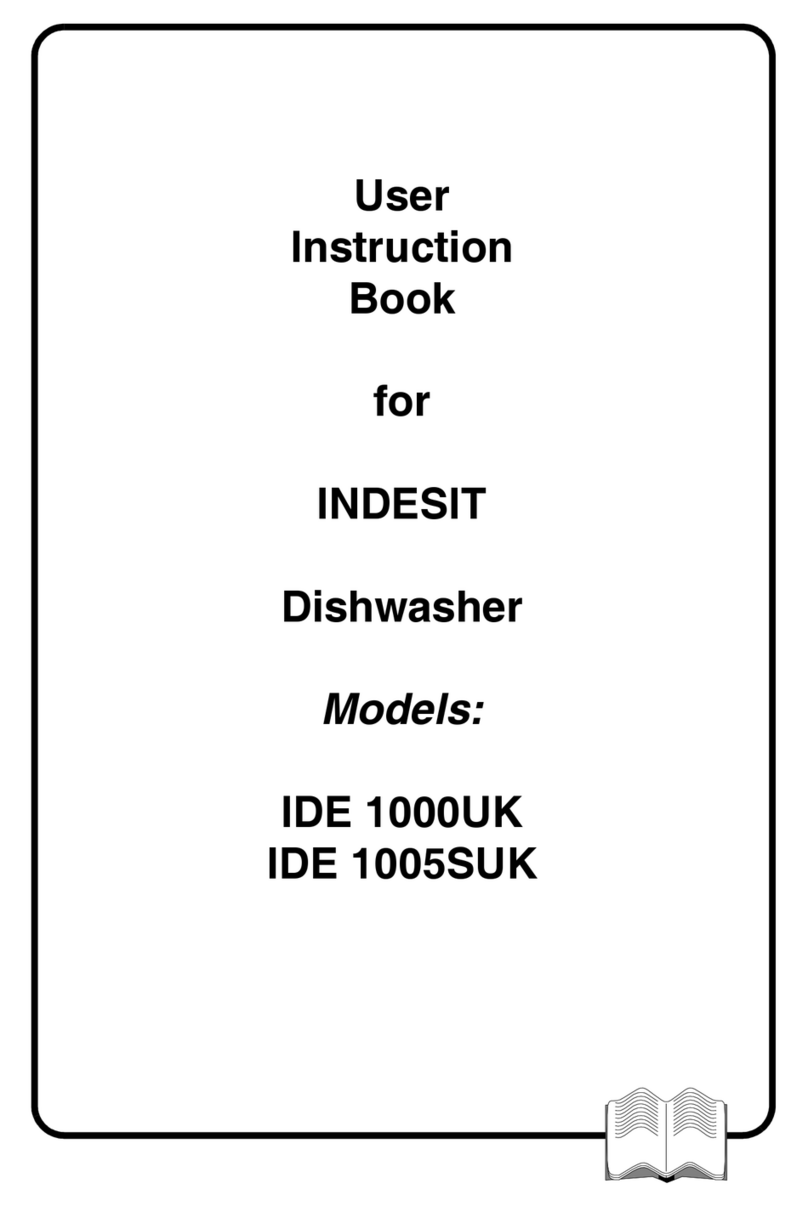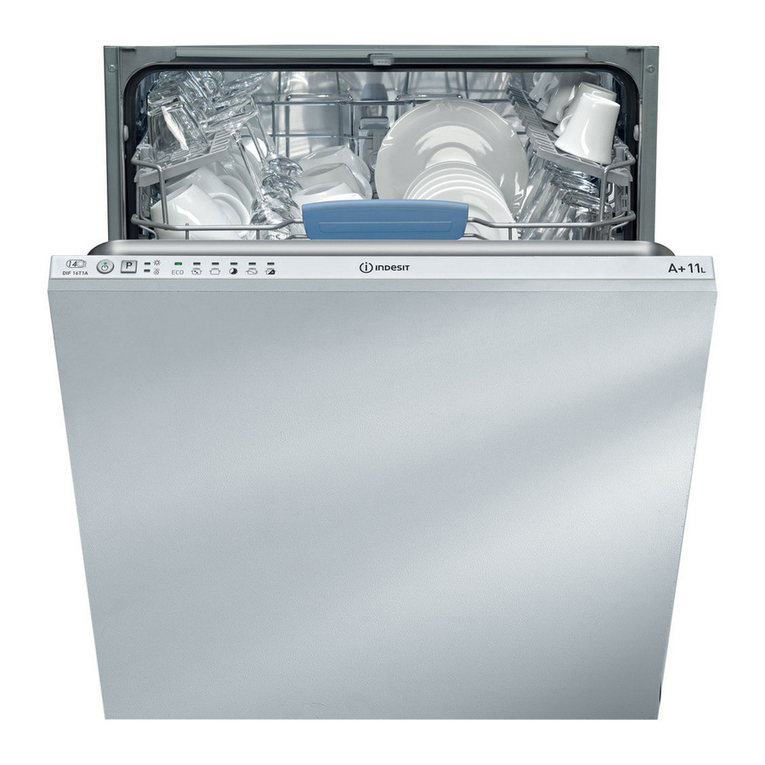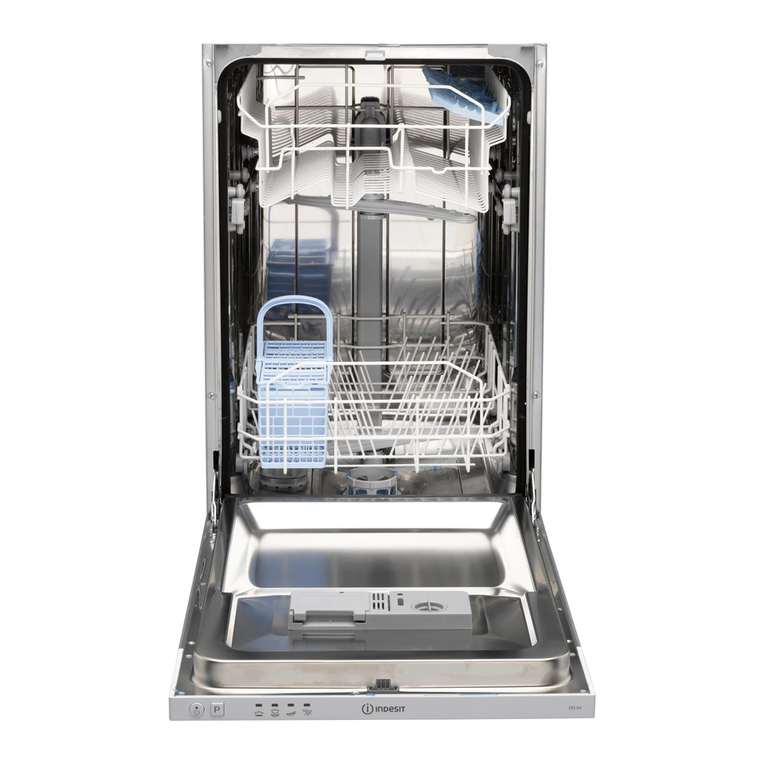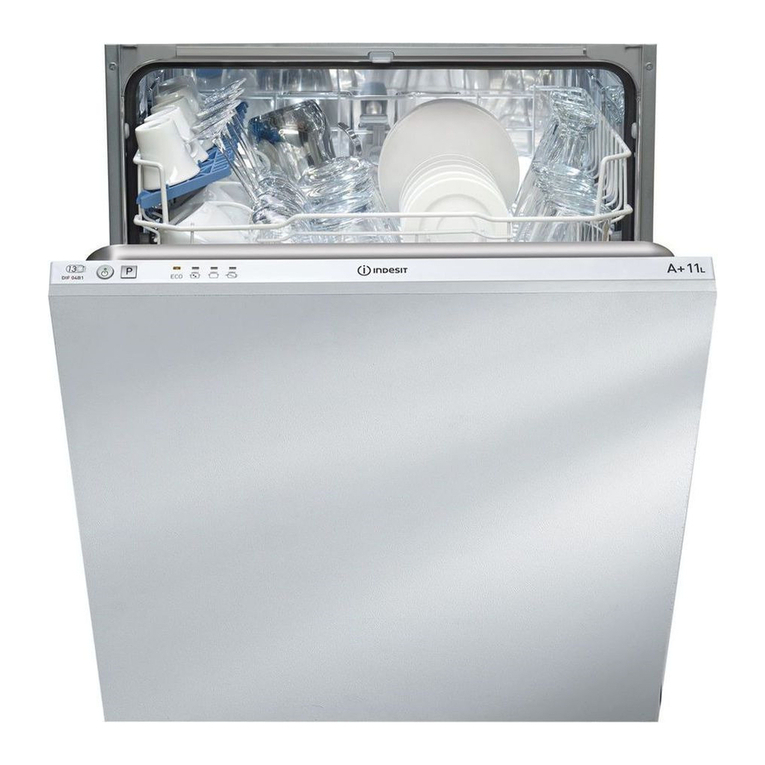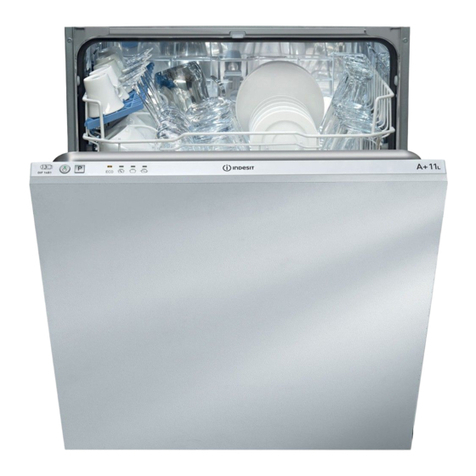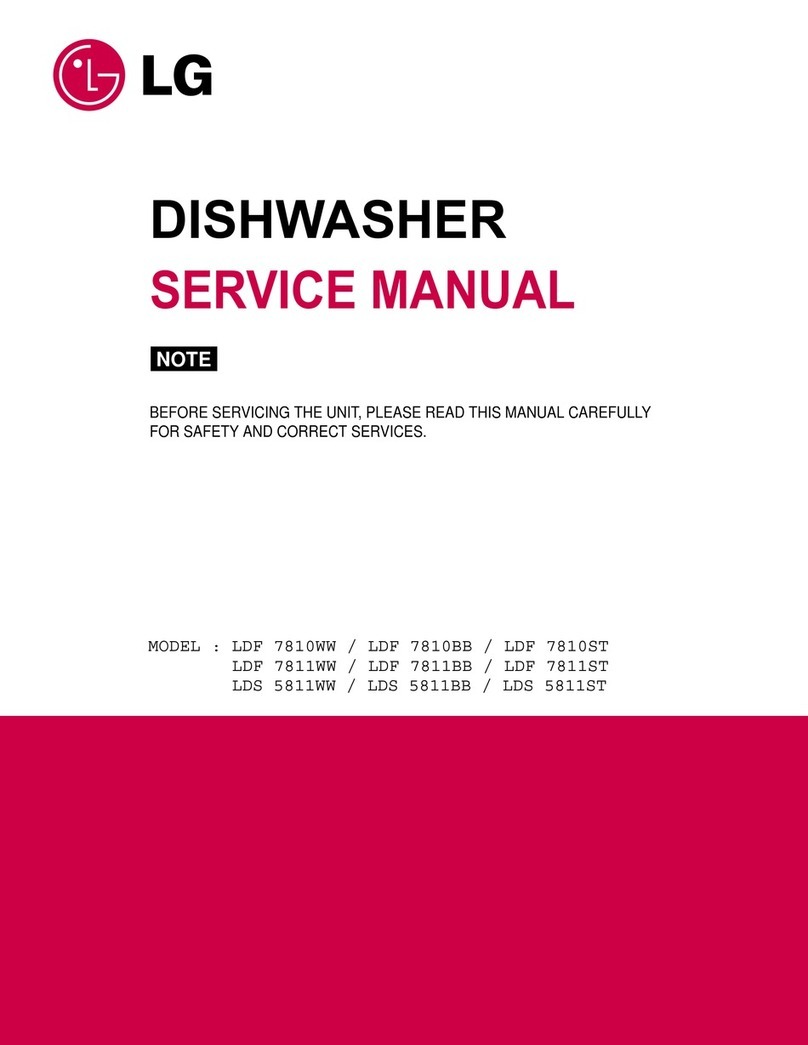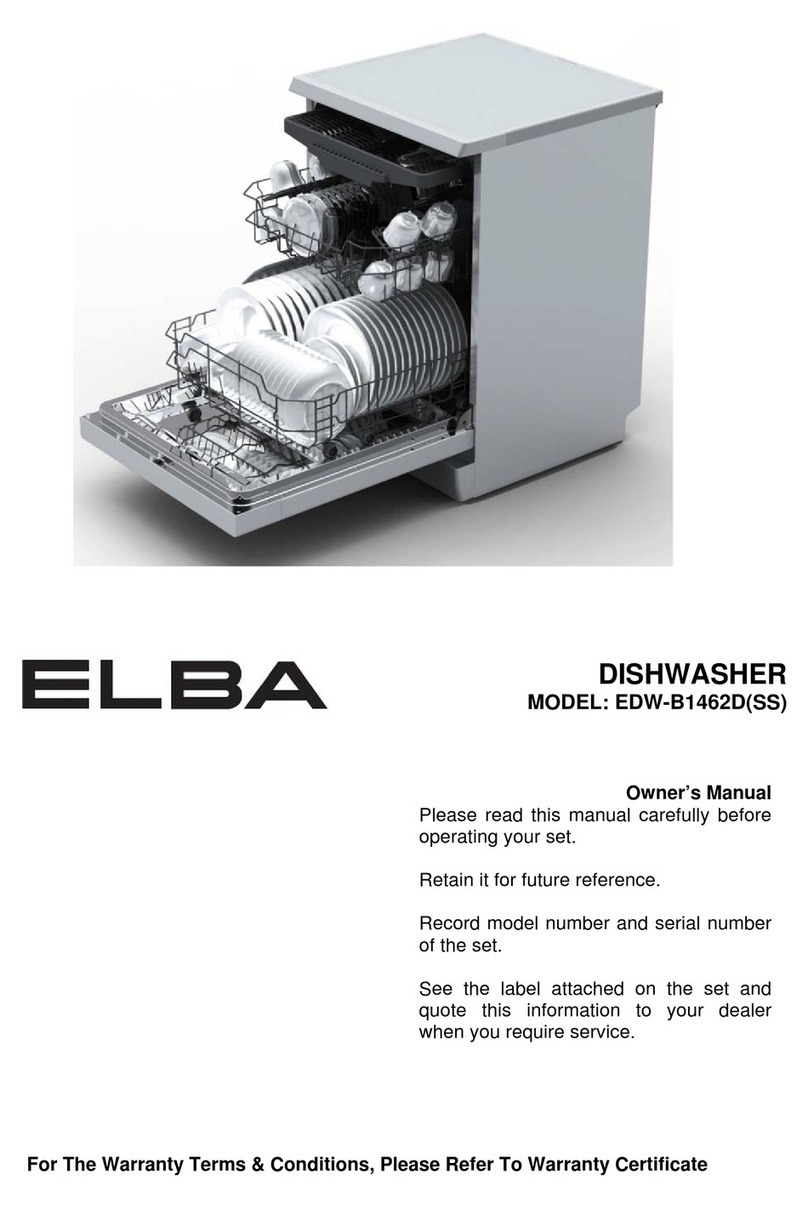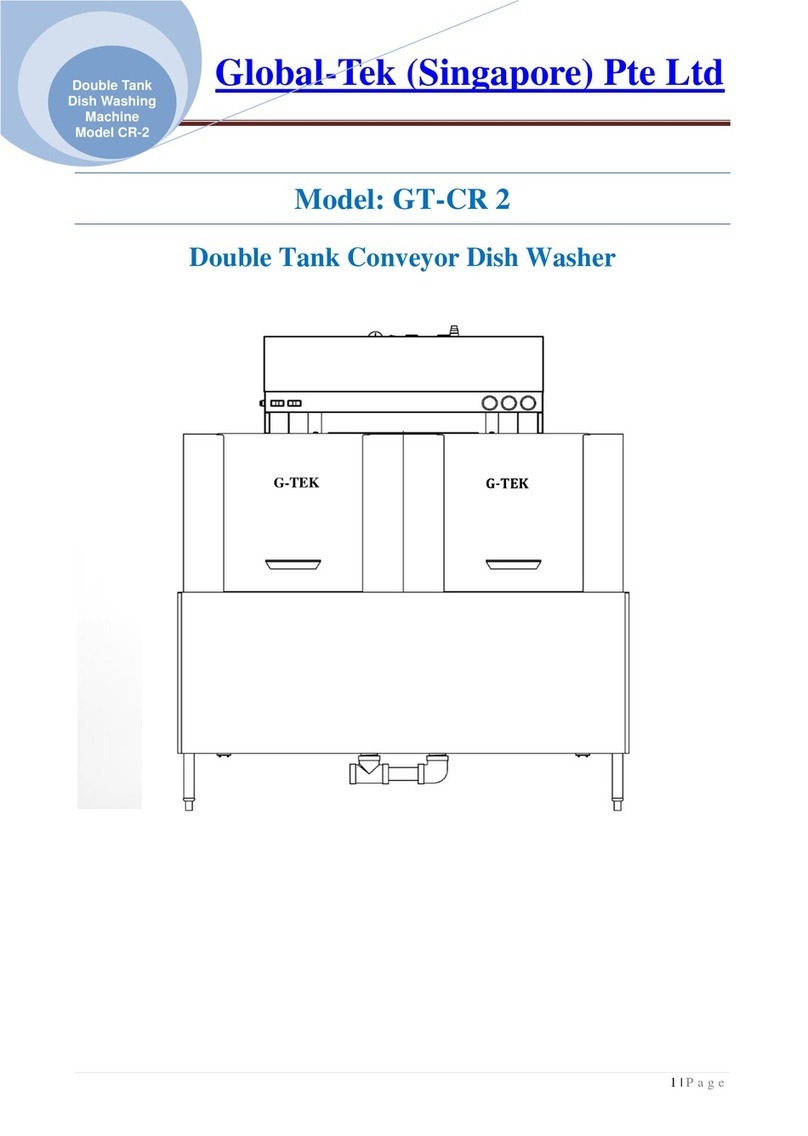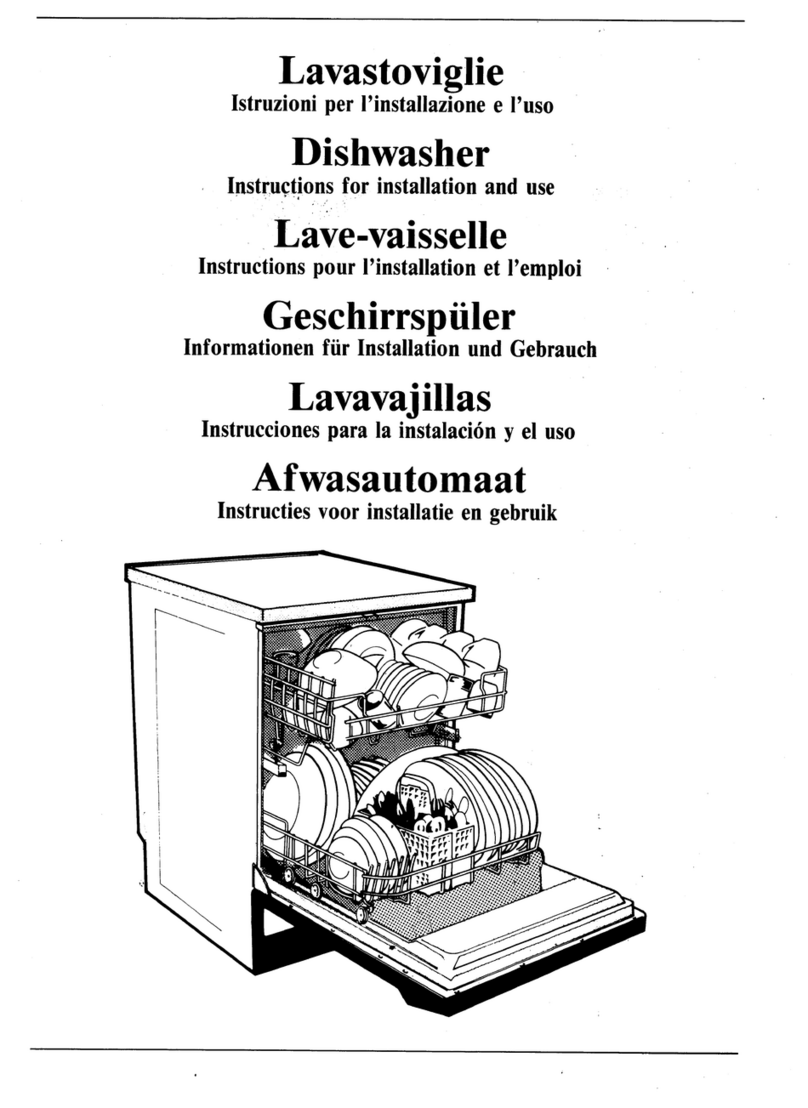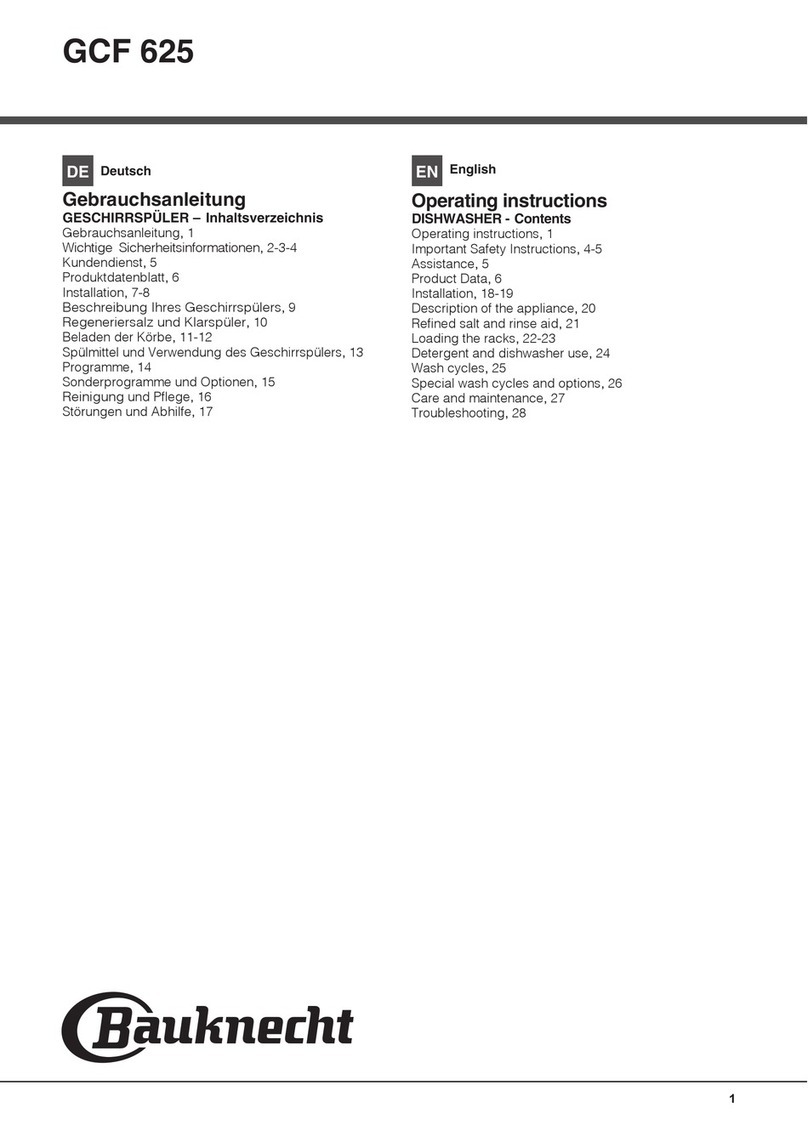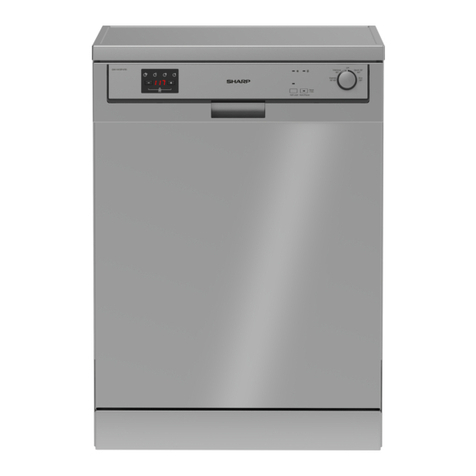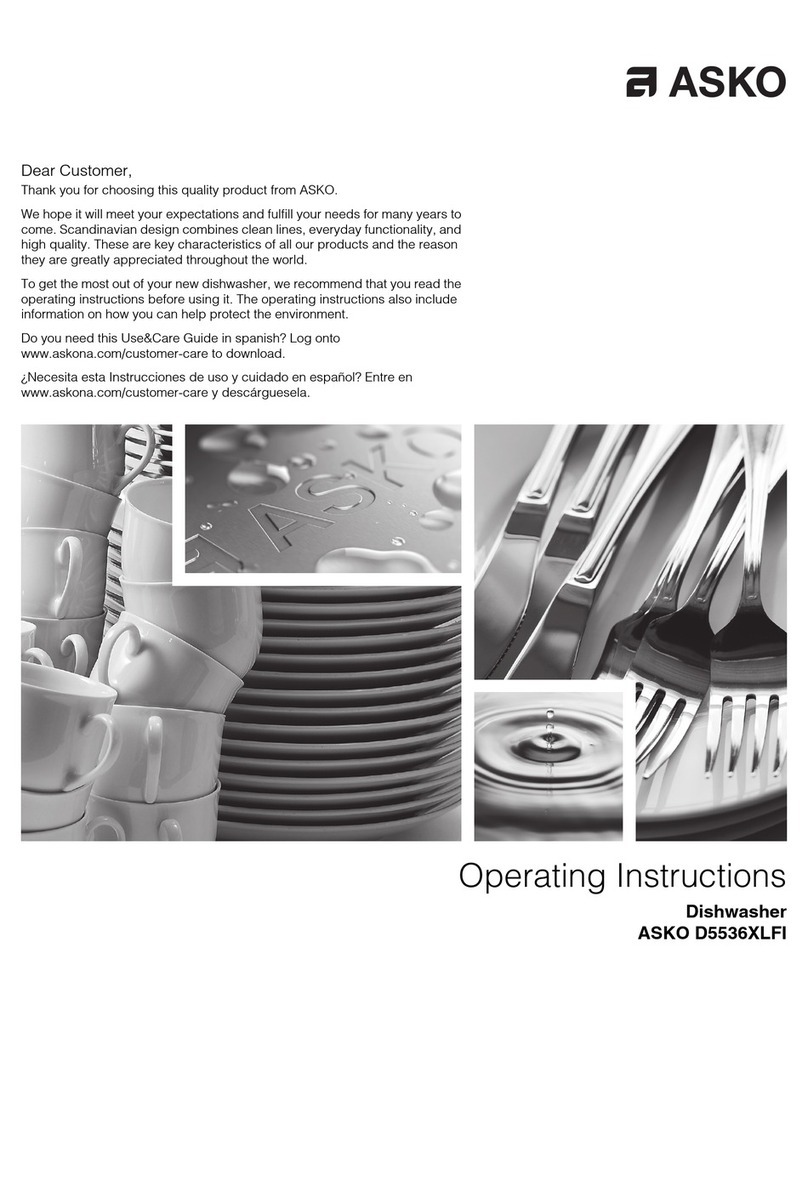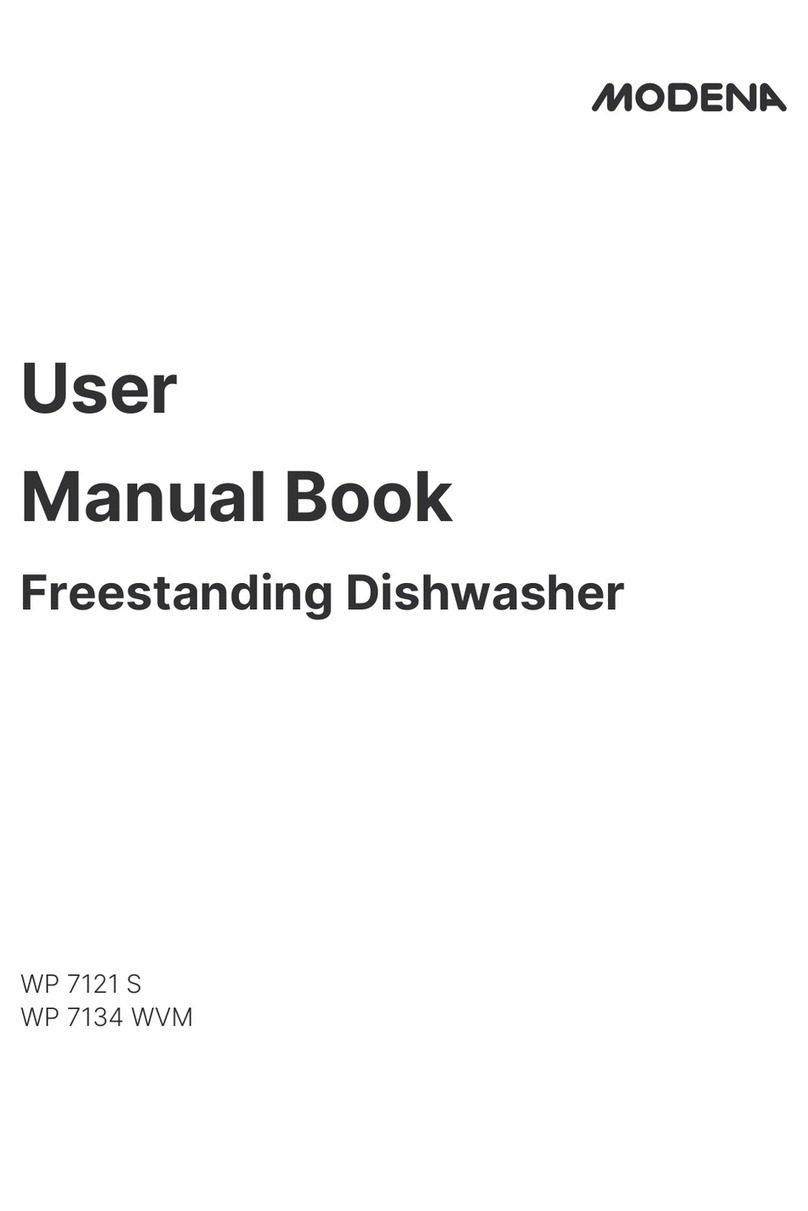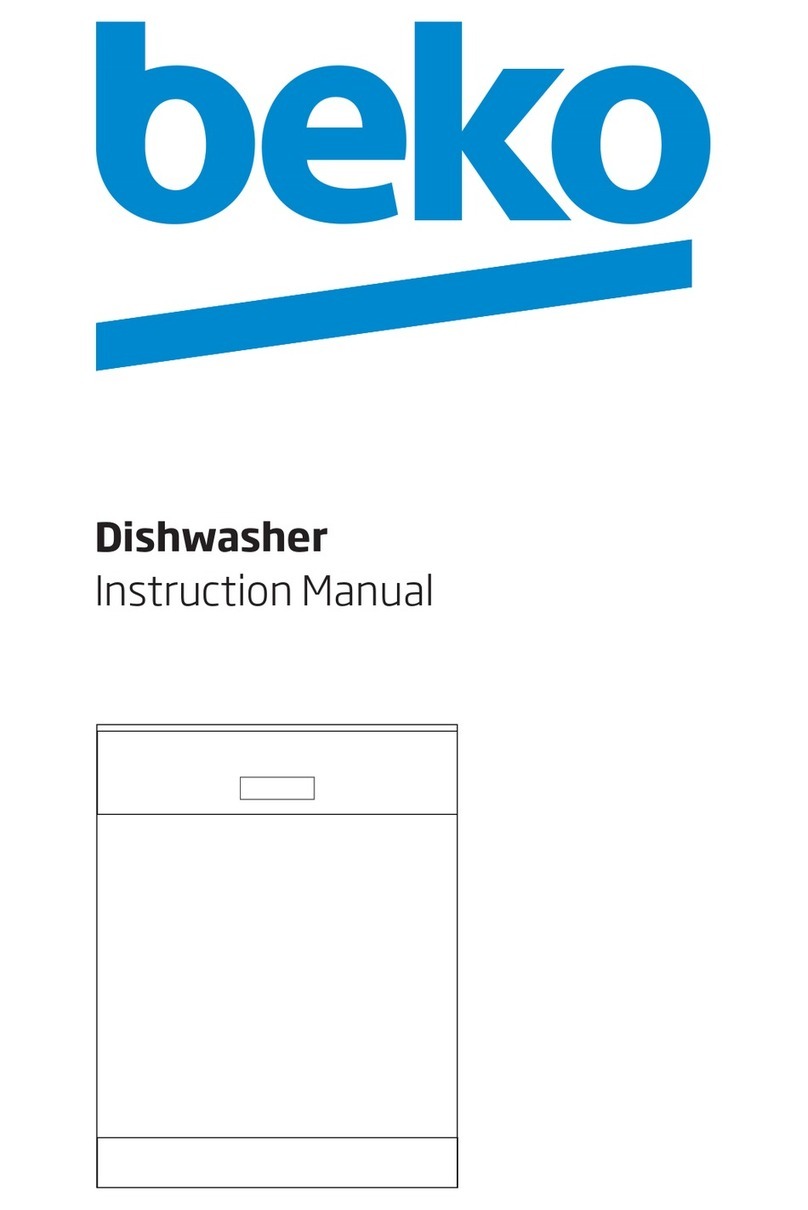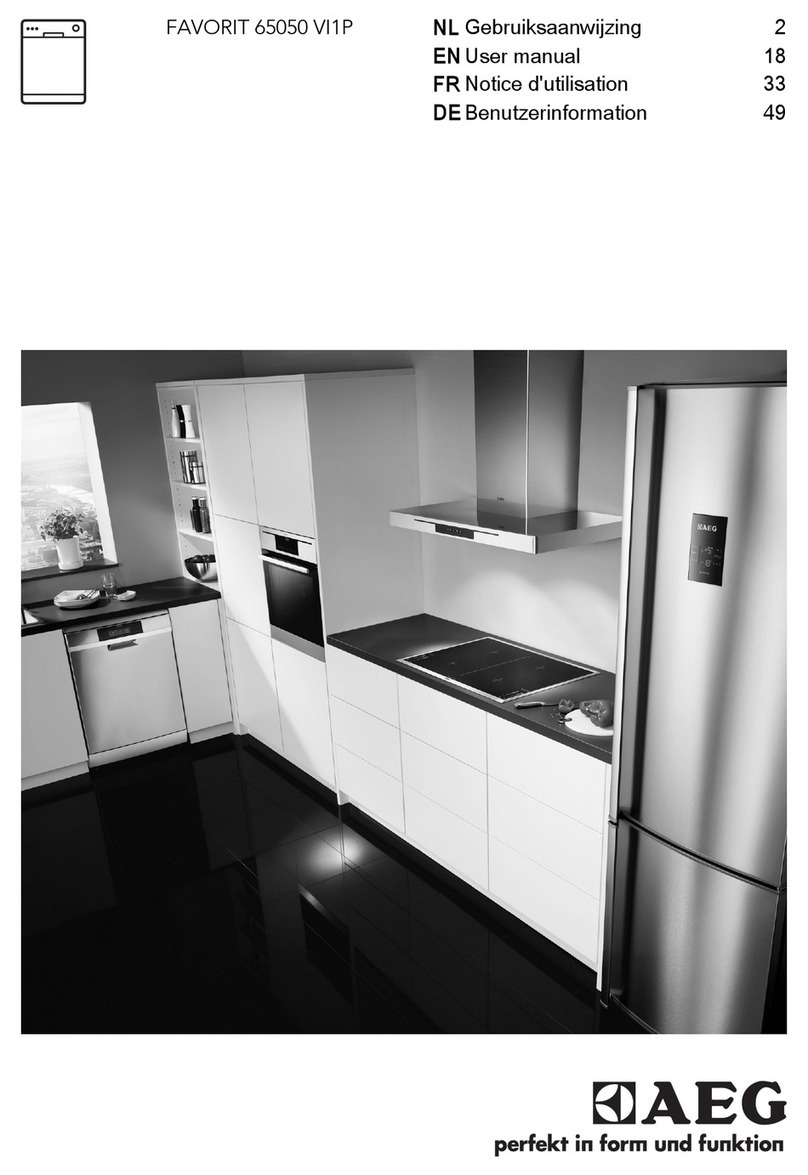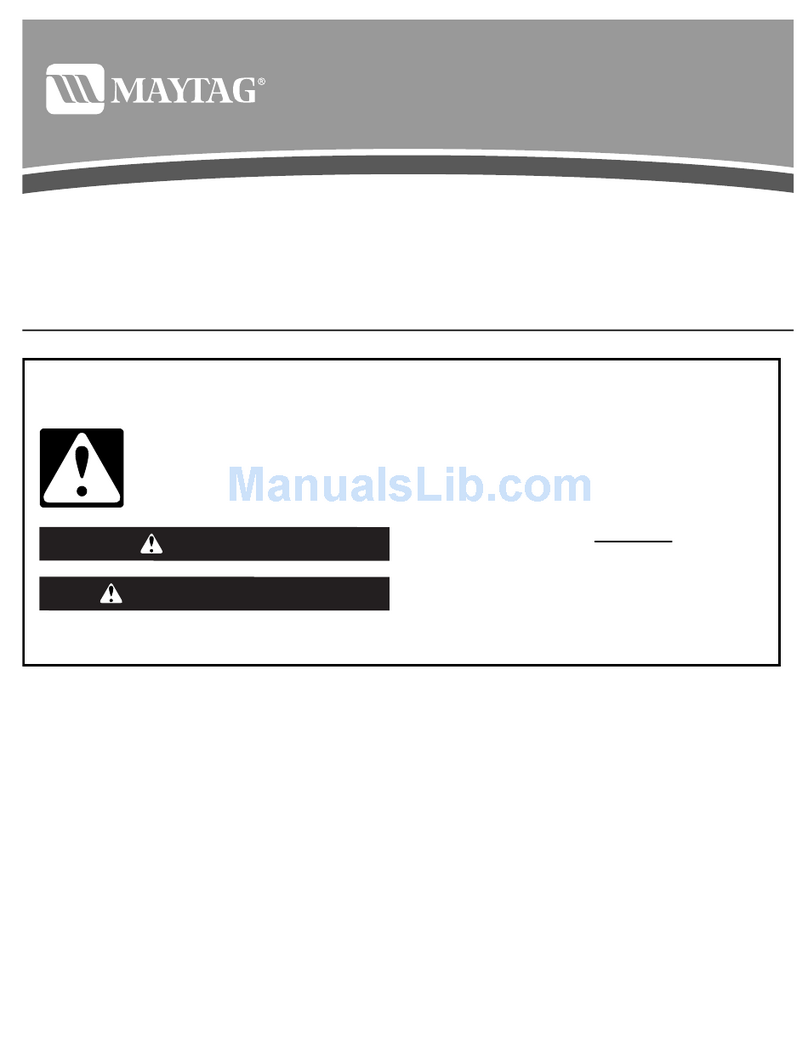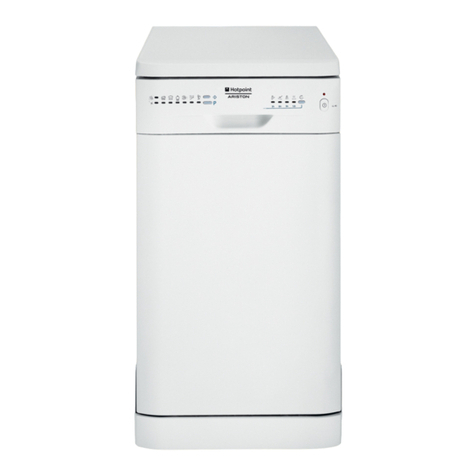8
EN
Energy Saving Tips
- It is important to try and run the dishwasher when it is
fully loaded in order to save on energy. In order to prevent
odors from forming and food from caking onto the dishes,
you can run the hold cycle.
- Choose the right wash cycle: the choice of cycle depends
on the type of dishware, cookware and utensils eing
washed and how dirty they are.
- Use the right amount of detergent: if you use too much
detergent, the result will not e cleaner dishes, ut, rather,
a greater negative impact on the environment.
- There is no utility in rinsing dishes, cookware and utensils
efore placing them in the dishwasher.
After Every Wash
After every wash, turn off the water supply to the appliance
and leave the door slightly ajar so that moisture and odors
are not trapped inside.
Remove the Plug
Before cleaning or performing maintenance, always
remove the plug from the socket. Do not run risks.
No Solvents or Abrasive Cleaning Products
To clean the exterior and ru er parts of the dishwasher,
do not use solvents or a rasive cleaning products. Rather,
use only a cloth and warm soapy water.
To remove spots or stains from the surface of the interior,
use a cloth dampened with water and a little white vinegar,
or a cleaning product made specifically for dishwashers.
When You Go on Holiday
When you go on holiday, it is recommended that you run
a wash cycle with the dishwasher empty and then remove
the plug from the socket, turn off the water supply and
leave the door of the appliance slightly ajar. This will help
the seals last longer and prevent odors from forming within
the appliance.
Moving the Appliance
If the appliance must e moved, try to keep it in the vertical
position. If a solutely necessary, it can e positioned on
its ack.
Seals
One of the factors that cause odors to form in the
dishwasher is food that remains trapped in the seals.
Periodic cleaning with a damp sponge will prevent this
from occuring.
How to Keep Your Dishwasher in Shape
The European Directive 2002/96/EC on Waste Electrical
and Electronic Equipment (WEEE), requires that old
household electrical appliances must not e disposed of
in the normal unsorted municipal waste stream. Old
appliances must e collected separately in order to
optimise the recovery and recycling of the materials they
contain and reduce the impact on human health and the
environment.
Disposal of old electrical appliances
The crossed out "wheeled in" sym ol on the product
reminds you of your o ligation, that when you dispose of
the appliance it must e separately collected.
Consumers should contact their local authority or retailer
for information concerning the correct disposal of their
old appliance.
